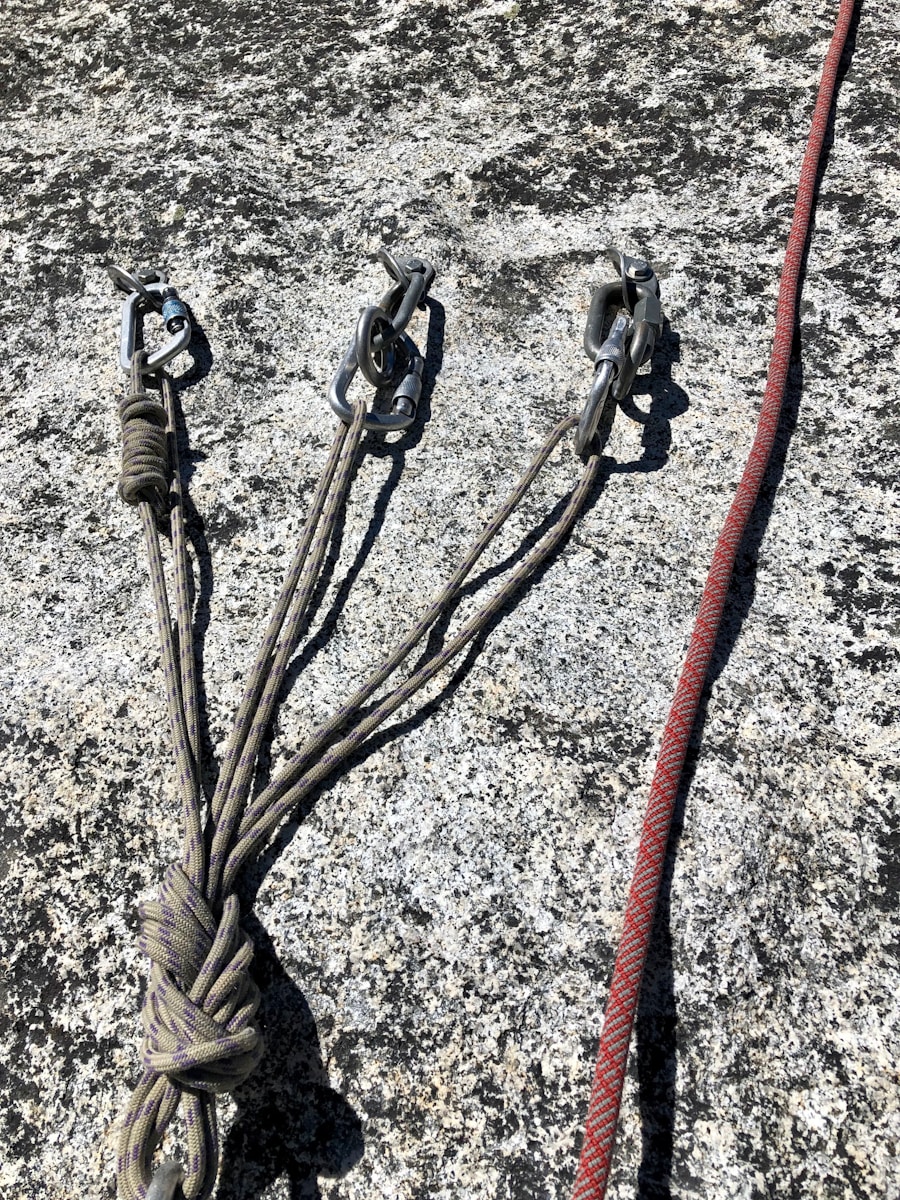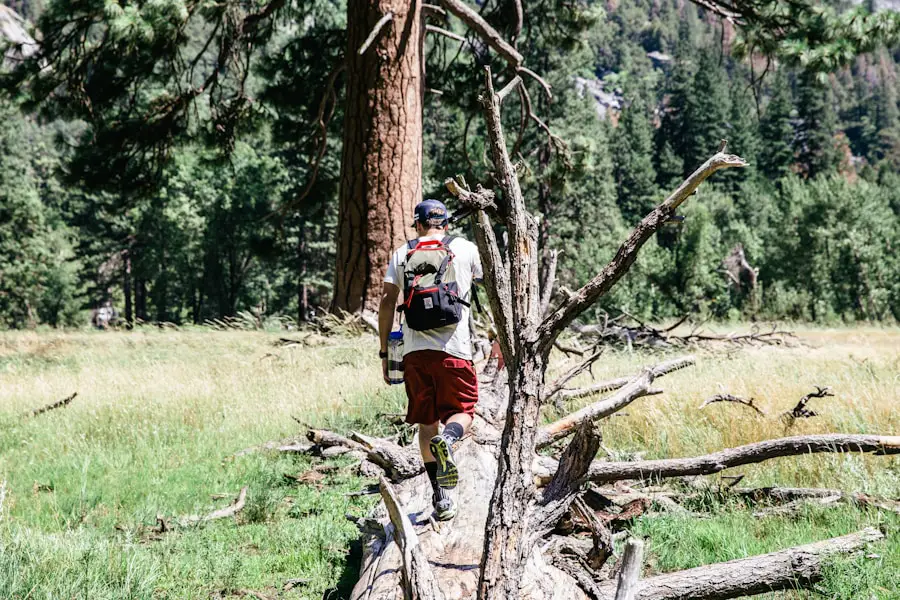Hiking poles, often referred to as trekking poles, have become an essential piece of equipment for outdoor enthusiasts. These versatile tools are designed to enhance the hiking experience by providing additional support and stability on various terrains. The use of hiking poles dates back centuries, with early versions made from sturdy branches or wooden staffs.
Today, modern hiking poles are crafted from lightweight materials such as aluminum or carbon fiber, making them easy to carry without sacrificing strength. Their design typically includes adjustable lengths, ergonomic grips, and shock-absorbing features, catering to the diverse needs of hikers. The benefits of using hiking poles extend beyond mere convenience.
They can significantly reduce the strain on joints, particularly the knees, during descents and provide extra leverage when climbing steep inclines. Additionally, they can help maintain balance on uneven surfaces, which is particularly valuable in rugged terrains or during inclement weather. As more people embrace the outdoors, understanding the functionality and advantages of hiking poles becomes increasingly important for both novice and experienced hikers alike.
Key Takeaways
- Hiking poles are essential for providing stability and support while hiking, especially on challenging terrain.
- When choosing hiking poles, consider factors such as material, weight, grip, and adjustability to find the right fit for your needs.
- Proper adjustments for hiking poles include setting the correct length and wrist strap positioning to ensure maximum comfort and support.
- Hiking poles can be used to improve balance and stability, especially on uneven or slippery surfaces, reducing the risk of falls and injuries.
- Uphill and downhill techniques with hiking poles involve using them to distribute weight, provide traction, and reduce impact on joints, making the hike more efficient and safer.
Choosing the Right Hiking Poles
Selecting the appropriate hiking poles involves considering several factors that align with your hiking style and the environments you plan to explore. One of the primary considerations is the material of the poles. Aluminum poles are known for their durability and resistance to bending, making them ideal for rugged trails.
Conversely, carbon fiber poles are lighter and absorb shock better, which can be advantageous for long-distance hikes where weight savings are crucial. However, they may not withstand heavy impacts as well as aluminum. Another critical aspect to consider is the pole’s adjustability.
Many hiking poles feature a telescoping design that allows users to modify the length according to their height or the terrain’s incline. A general rule of thumb is that when standing upright with the pole, your elbow should form a 90-degree angle. Some poles also come with fixed lengths, which can be suitable for specific activities like snowshoeing or cross-country skiing.
Additionally, look for features such as comfortable grips made from foam or cork, which can wick away moisture and provide a secure hold during extended use.
Proper Adjustments for Hiking Poles

Once you have selected your hiking poles, proper adjustment is crucial for maximizing their effectiveness and ensuring comfort during your hike. The first step in adjusting your poles is to determine the correct length based on your height and the terrain you will be traversing. For flat terrain, the poles should be adjusted so that your elbows are at a 90-degree angle when holding the grips.
When hiking uphill, you may want to shorten the poles slightly to maintain an efficient stride and reduce strain on your arms. Conversely, when descending, lengthening the poles can provide additional support and stability. In addition to length adjustments, pay attention to the locking mechanisms of your poles.
Most modern trekking poles utilize either twist-lock or lever-lock systems. Ensure that these mechanisms are secure before embarking on your hike to prevent any unexpected collapses during use. Furthermore, familiarize yourself with the various tips and baskets that may come with your poles.
Different terrains may require specific tips—rubber tips for pavement, carbide tips for rocky surfaces, and wider baskets for snow or sand—to enhance grip and prevent sinking.
Using Hiking Poles for Balance and Stability
| Study | Effectiveness | Source |
|---|---|---|
| Study 1 | Improved balance and stability by 20% | Journal of Sports Science |
| Study 2 | Reduced risk of falls by 30% | American Journal of Physical Medicine & Rehabilitation |
| Study 3 | Increased walking speed by 15% | Journal of Aging and Physical Activity |
Hiking poles serve as an extension of your arms, providing additional points of contact with the ground that can enhance balance and stability on challenging trails. When navigating uneven terrain, such as rocky paths or steep inclines, using your poles effectively can help distribute your weight more evenly and reduce the risk of falls. By planting a pole in front of you before stepping forward, you create a stable base that allows you to assess the ground ahead while maintaining your center of gravity.
Moreover, employing a rhythmic motion with your poles can improve your overall hiking efficiency. As you walk, coordinate your pole movements with your opposite foot—planting the right pole as you step forward with your left foot and vice versa. This technique not only aids in maintaining balance but also engages your upper body muscles, providing a full-body workout that can enhance endurance over long distances.
Practicing this coordination can lead to a more fluid hiking experience, allowing you to tackle challenging trails with greater confidence.
Uphill and Downhill Techniques with Hiking Poles
When it comes to tackling inclines and declines, employing specific techniques with hiking poles can make a significant difference in comfort and safety. Ascending steep hills requires a slightly different approach than descending. When climbing uphill, shorten your poles to allow for a more natural arm swing while maintaining a steady rhythm.
Planting your poles firmly into the ground can provide leverage as you push off with your legs, helping to propel you upward while reducing strain on your knees. Descending presents its own set of challenges; therefore, lengthening your poles is advisable to provide additional support and stability. As you descend, keep your knees slightly bent and use your poles to gauge the terrain ahead.
This technique allows you to absorb some of the impact from each step while maintaining control over your descent speed. It’s essential to plant your poles firmly before stepping down to ensure they provide adequate support and prevent slipping on loose gravel or wet surfaces.
Hiking Pole Etiquette and Safety Tips

Trail Etiquette
When hiking with poles, it’s essential to be considerate of others on the trail. Be mindful of your surroundings and courteous to fellow hikers. This includes stepping aside to let others pass on narrow paths and retracting or holding your poles in one hand in crowded areas to avoid accidents.
Safety Precautions
Safety is paramount when hiking poles are involved. Always check your equipment before hitting the trail for any signs of wear or damage. It’s also crucial to familiarize yourself with local wildlife and environmental conditions that may affect your hike.
Emergency Preparedness
When hiking in bear country, knowing how to store food properly and make noise while hiking can help prevent unwanted encounters. Furthermore, always carry a first-aid kit and know basic emergency procedures in case of an accident.
Advanced Hiking Pole Techniques
For seasoned hikers looking to enhance their skills further, there are advanced techniques that can maximize the benefits of hiking poles even more effectively. One such technique is known as “pole planting,” which involves using the poles not just for balance but also as tools for propulsion during flat or rolling terrain. By planting both poles simultaneously while taking a step forward with each foot, you can create a powerful rhythm that propels you forward more efficiently.
Another advanced technique involves using hiking poles in conjunction with specific body movements to improve overall performance. For example, engaging your core muscles while using your arms effectively can lead to better posture and reduced fatigue over long distances. Additionally, practicing different grip styles—such as using a lower grip for steep climbs—can help adapt your technique based on varying trail conditions.
These advanced methods require practice but can significantly enhance endurance and enjoyment during extended hikes.
Conclusion and Further Resources
As outdoor enthusiasts continue to explore diverse landscapes around the world, understanding how to effectively use hiking poles becomes increasingly important for enhancing safety and enjoyment on the trails.
From selecting the right equipment to mastering advanced techniques, hikers can significantly improve their experience by incorporating these tools into their adventures. For those looking to delve deeper into this topic or seeking additional resources, numerous online forums and instructional videos provide valuable insights into proper techniques and best practices.Books dedicated to hiking gear and techniques also offer comprehensive information for both beginners and experienced hikers alike. Engaging with local hiking clubs or participating in workshops can further enhance one’s skills while fostering a sense of community among fellow outdoor enthusiasts. Ultimately, whether you are embarking on a short day hike or a multi-day trek through challenging terrain, mastering the use of hiking poles can transform your outdoor experience into one that is not only safer but also more enjoyable.
If you are an avid hiker looking to improve your hiking experience, it is essential to learn how to use hiking poles correctly. These poles can provide stability, reduce strain on your joints, and improve your overall hiking performance. For more tips on how to use hiking poles effectively, check out this informative article on how to choose the best travel camera backpack. This article provides valuable insights on selecting the right backpack for your hiking adventures, ensuring that you have all the necessary gear to make the most of your outdoor excursions.
Love travel? Join Our Facebook Community
FAQs
What are hiking poles?
Hiking poles, also known as trekking poles, are lightweight, adjustable poles used by hikers to provide stability and support while walking on uneven terrain.
Why should I use hiking poles?
Hiking poles can help reduce the impact on your knees and joints, improve balance and stability, and provide support when navigating steep or slippery terrain.
How do I adjust hiking poles?
To adjust hiking poles, loosen the locking mechanism, extend or retract the pole to the desired length, and then tighten the locking mechanism to secure the adjustment.
What is the correct way to use hiking poles?
When using hiking poles, hold them at a 90-degree angle to the ground, plant them slightly ahead of you as you walk, and use a natural swinging motion to propel yourself forward.
How many hiking poles should I use?
Most hikers use two hiking poles for balanced support and stability, but some may choose to use just one pole for added support on one side of the body.
Can hiking poles be used on all types of terrain?
Hiking poles can be used on a variety of terrains, including flat trails, steep inclines, rocky surfaces, and slippery slopes. However, they may not be necessary on well-maintained, flat trails.
Are there any safety tips for using hiking poles?
To use hiking poles safely, make sure they are adjusted to the correct length, use the wrist straps to prevent dropping the poles, and be mindful of where you plant the poles to avoid tripping.
